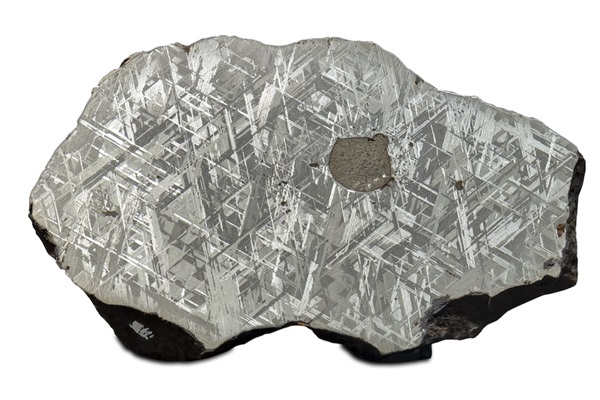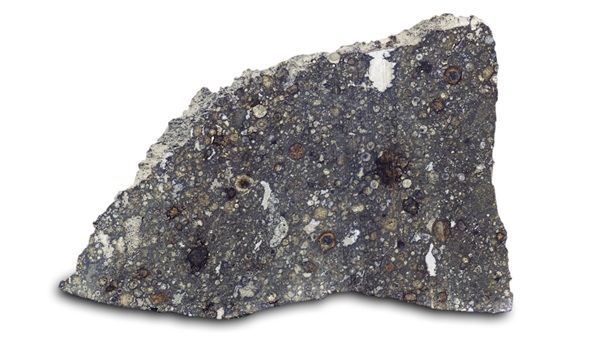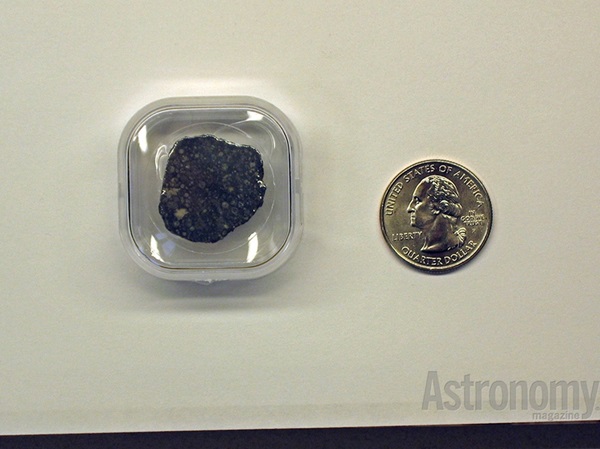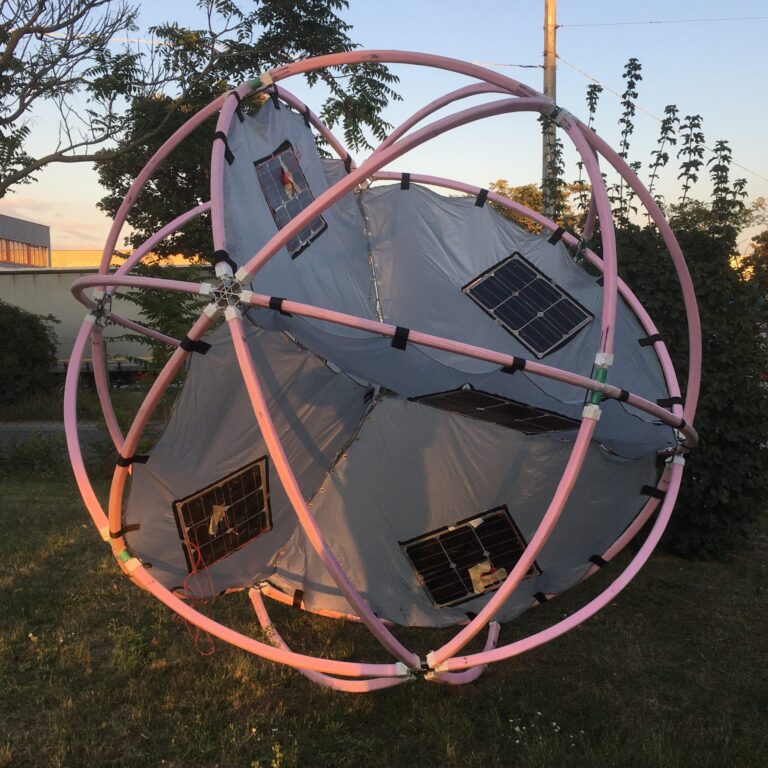Key Takeaways:
- Meteorite analysis begins with basic measurements (weight, dimensions, photography) and categorization into stony, stony-iron, or iron types, further subdivided based on the presence or absence of chondrules.
- Techniques like micro-CT scanning, microscopy (including electron microscopy), and Raman spectroscopy are used to analyze meteorite composition and structure at various scales, providing information on mineral identification and molecular structure.
- Mass spectrometry, employing different methods, analyzes isotopic abundances within meteorite samples to determine elemental composition and trace the origins of materials within the solar system, including contributions from supernovae.
- Specialized techniques such as cryogenic magnetometry (measuring remnant magnetic fields) and ion exchange column chromatography (purifying samples for high-precision analysis) are employed to investigate the solar system's early magnetic fields and the composition of the primordial nebula.
For a stargazer who watches a meteor streak across the sky, the brilliant display is over in an all-too-brief instant. But for a meteoriticist, a scientist who studies meteorites, that same streak signals that their task has just begun.
Most meteors completely burn up in Earth’s atmosphere. But occasionally, a chunk of cosmic rock makes it way to Earth’s surface as a meteorite. And different kinds of meteorites have different stories to tell about the solar system and its history.
Meteoriticists use a broad array of tools and techniques to unravel the secrets of meteorites. And the techniques they use depend on the type of meteorite at hand, as well as what they hope to learn from it.
A basic guide to analyzing meteorites
Meteorites come in three basic types: stony, stony-iron, and iron. Stony meteorites can be further categorized by whether they have chondrules, which are small bits of material that melted and resolidified when the meteorite was still part of an asteroid. Stony meteorites with chondrules are called chondrites, while those without chondrules are called achondrites.
“There is a set of basic measurements we make when a meteorite comes in,” Philipp Heck, Curator of Meteoritics at the Field Museum in Chicago, tells Astronomy. It is weighed, measured, and photographed, and that information goes into a database.
The next step is to slice a small piece off the meteorite for detailed study. A micro-CT scan, a type of 3D image made with X-rays, unlocks information about the rock itself — for example, whether it consists of a single rock type or a collection of fragments known as breccia. When scientists polish and study a meteorite sample under a microscope, they can identify rare minerals by their color, as well as chondrules and other inclusions. Meteoriticists often turn to electron microscopes to provide even more detail.
Raman spectroscopy is another common technique scientists use to study meteorites. With spectroscopy, scientists break down a spectrum of light into its component colors. The spectrum of every energized chemical element, such as a neon light, emits a unique set of colors that corresponds to only that specific element. In this way, spectroscopy is like taking a chemical fingerprint.
With Raman spectroscopy, named for physicist C. V. Raman, meteoriticists can learn about the molecular structure of the minerals within a meteorite — not just the elements. Just like atoms of a particular element emit light at specific energy levels, so do the molecules that combine to make up minerals. By shining laser light tuned to a specific energy onto a mineral, the light’s energy may be shifted in a way that conveys information about the mineral’s structure.
These are standard techniques for meteorite samples that make their way into the lab. “Once we’ve done this, we know basically what kind of meteorite we’re looking at and we can determine how to proceed,” says Heck.
Finding out where meteorites come from
In the fortunate case where a fall is actually observed and the meteorite can be quickly recovered, researchers can learn a great deal about its parent body, which is usually an asteroid. In some cases, scientists can even start studying a meteorite before it hits the ground.
On the night of January 16, 2018, a fireball lit up the skies over much of the Midwestern United States and rained extraterrestrial debris onto several frozen lakes near Hamburg, Michigan.
Radar from local airports gave an indication of the meteor’s size and, more importantly, where it landed. Since the fragments were readily visible on the frozen lakes, meteorite hunters were able to quickly collect them before they could be exposed to earthly weathering or contaminants.
“The collectors are critical to our work,” says Heck. “The first thing we did was measure the magnetic properties.”
Exposure to external magnetic fields (such as Earth’s) can distort a meteorite’s internal magnetic properties, which means a fresh meteorite fall is ideal for study with a cryogenic magnetometer. This device can measure the remnant magnetic field of a meteorite sample, which stems from magnetic materials like iron embedded within it. By learning more about a meteorite’s remnant magnetism, researchers can glean information about the solar system’s magnetic field at the time of the space rock’s formation.
Mass spectroscopy is another important analysis technique meteoriticists use to study meteorites. There are several different methods of mass spectroscopy. But the basic idea behind all of them is to get a spectrum of the isotopes within a meteorite sample.
An element is defined by the number of protons it has in the nucleus of one of its atoms, but the number of neutrons it has can vary. Versions of an element with differing numbers of neutrons are called isotopes. The more neutrons an isotope has, the heavier it is. Chemically, each isotope of a given element behaves similarly, but mass spectroscopy gives scientists a way to distinguish between them.
In this technique, atoms of a meteorite sample are ionized so that they have an electric charge. They are then sent through a magnetic field, which guides the charged particles along a curved path. The lighter the atom is, the more it curves. In this way, scientists can separate isotopes of a given element and measure their relative abundances.
When it comes to meteorites, mass spectroscopy has the power to reveal the origins of the nebula that gave birth to our solar system.
Meteorites and the origin of our solar system
Zachary Torrano, a Postdoctoral Research Associate at Los Alamos National Laboratory, studies chondrite meteorites containing carbon-based compounds, called carbonaceous chondrites. These primitive meteorites, which date back some 4.567 billion years, retain the isotopic composition the solar system had at its earliest stage.
In addition to carbon, carbonaceous chondrite meteorites contain calcium-aluminum-rich inclusions, or CAIs. These CAIs are the oldest known solids in the solar system, containing material that existed in the primordial nebula from which the Sun formed.
CAIs also include heavier elements, such as chromium and titanium. By studying the isotopic abundances of these heavy elements, meteoriticists can also glean information about the exploding stars that produced the raw material that made up our solar nebula in the first place. And high-precision techniques, such as thermal ionization mass spectrometry, can help meteoriticists determine these isotopic abundances.
However, says Torrano: “These techniques require the introduction of only the purified element of interest.”
To obtain a purified meteorite sample, meteoriticists use a process called ion exchange column chromatography. In this method, a small piece of the meteorite is dissolved in acid and allowed to drip through a resin that retains only specific elements thanks to the process of ion exchange.
Using another acid, these elements are then removed from the resin, repeating the process if necessary for higher purity. When the purified meteorite sample is ready, Torrano and his colleagues study it with high precision mass spectroscopy. So far, their research suggests that the young solar system pulled material from more than one reservoir, possibly from different types of supernovae nearby.
The sophisticated techniques described above are just a few of the many tools meteoriticists use to study space rocks that fall to Earth. But the most important tools they have at their disposal remain their curiosity and ingenuity, enabling them to coax out the solar system’s secrets from any small pieces it flings our way.












